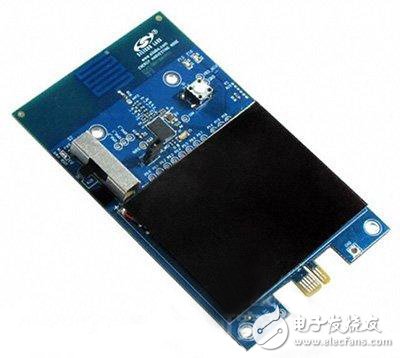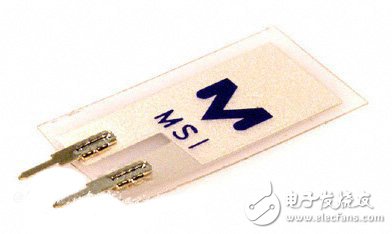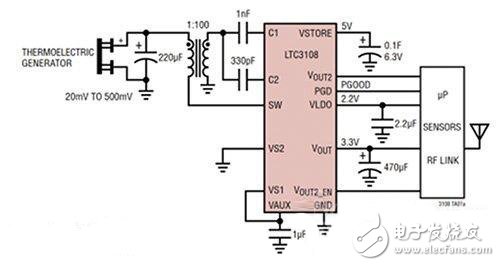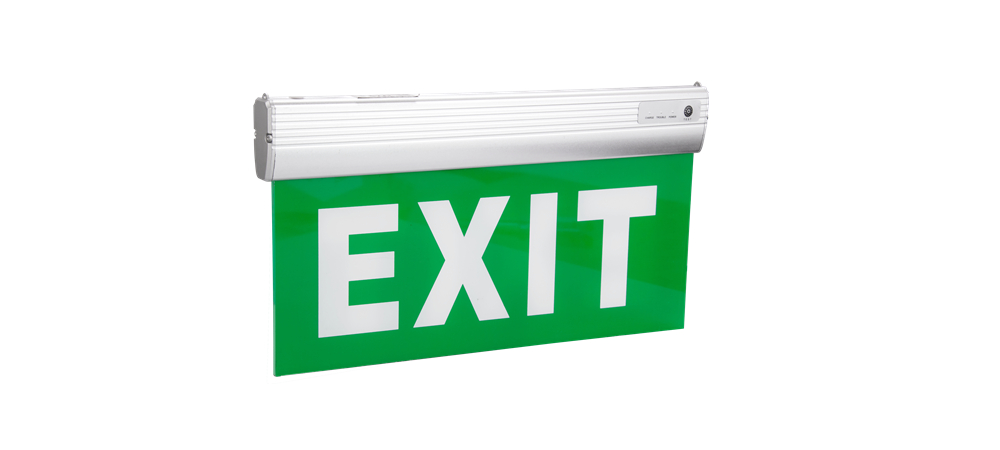In recent years, a large number of wearable electronic products have emerged, and one of the common problems faced by these products is battery life. Many smart watches must be recharged every day, and more professional fitness equipment, although working for a long time, still has shortcomings in terms of functionality and connectivity. As more and more requirements are required to connect to the Internet and other devices in the Internet of Things, wireless and computing components in the design are increasingly demanding power. Similarly, energy-efficient display technology is advancing, and the ever-increasing demand for a richer user interface is pushing the power requirements of such devices.
One of the solutions to this problem is to increase the use of energy harvesting techniques that collect energy from the environment. This approach can be used to provide stable turbulence to the battery, thereby extending the charging interval of the wearable device and thereby increasing the attractiveness of the terminal design.
However, the use of these technologies faces four engineering challenges: the generation of electrical energy, the management and storage of electrical energy, the size and cost of collecting components. Over the years, a lot of research has been done on new energy harvesting, but most of the research has not yet introduced equipment that can be marketed.
The wearable device itself needs to be close to the human body, which provides access to a variety of sources of electrical energy and therefore has some key advantages.
Generation of electrical energy
There are a variety of methods for generating electrical energy from the environment for wearable devices, but there are advantages and disadvantages in engineering. Among them, the most mature one is the solar technology that has been supplying electricity to traditional watches for many years. Solar cells, such as Panasonic BSG's Amorton and IXYS devices, can be powered directly from daylight and are now powered by indoor lighting. As demonstrated by Silicon Labs' development kits, these devices use a small duty cycle to generate enough power to drive a wireless link for fifteen years.

Figure 1: Silicon Labs Energy Harvesting Evaluation Board with Solar Power
In addition, the evaluation board is flat and has a battery height of only 0.17 mm, which is another key consideration when designing wearable devices. The low-power controller here, the Si1012 wireless MCU, is a key device that maintains a low-power state of only 50 nA. The energy harvesting power supply has a leakage current of approximately 3 μA when enabled and can be offset by as little as 50 lux of light illuminating the solar cell. This allows the energy harvesting power supply to power the system in a dark environment for up to seven days, or to power the system indefinitely if there is a periodic light source that compensates for the lost energy. The system works in both indoor 200lx and outdoor 10,000lx sources.
However, the only concern here is the wireless connection rather than the total system power requirements. This is an ideal long-life method for fitness equipment that performs periodic measurements and feeds back measurements back to the hub.
Central hubs such as smart switches require higher currents and other technologies are under evaluation. One of the techniques is to collect heat from human body heat. When the watch is in close contact with the skin, the PelTIer and Seebeck effects can be used to generate electricity from the human body. Nowadays, commercial thermoelectric devices can produce 10 to 20 μW/cm2 of power at 5 degree temperature difference in contact with human skin. Two to three such devices can meet the power requirements of a health monitoring system.
A research team from the KAIST Research Institute in Korea has developed a thermoelectric generator that incorporates inorganic materials on an organic substrate and is extremely lightweight and extremely flexible. This fabric-type base is extremely flexible and has a bend radius of 20 mm, so it can be used in a wearable design that is close to human skin and does not change performance when the base is bent.

Figure 2: Flexible thermoelectric generator developed by KAIST Korea.
This generator uses special paste-like n-type (Bi2Te3) and p-type (Sb2Te3) thermoelectric materials that can be printed onto fabrics. This paste material covers the fabric fibers and forms a film of TE material hundreds of microns thick. This creates hundreds of thermoelectric points that generate electricity and allows researchers to significantly reduce the weight of the generator to around 0.13 g/cm2. In the wristband, a prototype generator with an area of ​​10 cm x 10 cm produces approximately 40 mW of power.
Wearable devices are also typically mobile, providing new ways to generate electricity for different battery charging methods. Using the MSP1006 Piezoelectric Vibration Sensor, such as Measurement SpecialTIes, provides power from the device's own motion. When the sensor is tuned to the user's motion resonance frequency (usually around 100 Hz), it can be used to provide power. This idea is not new – it has been used on automatic spring watches for decades, but it can be generated by the bending action of piezoelectric crystals. New methods of energy harvesting using motion are in the investigation stage, including capturing the charge generated by the movement of fibers in the material.

Figure 3: MSP1006 piezoelectric crystal of Measurement SpecialTIes.
The ability to use the electric field generated by radio emissions to collect electrical energy is still in the laboratory research stage. The popularity of wireless networks gives us the opportunity to collect this power for portable and wearable devices. However, this technology is still in its infancy, but it is highly likely that the wireless power supply will cancel the charging cable and simply charge the device by placing the wearable device on the charging pad.
Management and storage
Even after generating electricity through solar or vibration sensors, several challenges remain to be overcome. The resulting current can be very small and intermittent, and can only be used after collection. Similarly, the current from the battery must be managed before it can be supplied to a silicon wafer in a wearable design. This requires the use of storage components (from supercapacitors to batteries) in combination with next-generation power management ICs that have been optimized for energy harvesting applications and can operate at such low currents.
New higher-density battery technology for wearable systems is under development that utilizes the trickle charge function of the energy harvesting source without the need to deplete the battery's chemistry and the device's small size.
Linear Technologies has developed a versatile energy harvesting demonstration board. With this demo board, wearable system designers can evaluate all the different energy harvesting sources and evaluate how the power management of each energy harvesting source is different. The DC2048A can be used in the early stages of design to utilize piezoelectric, solar, thermoelectric energy sources or any other high impedance AC or DC power source.
The evaluation board contains four separate chips for handling different energy sources and management tasks. The LTC3588-1 Piezoelectric Energy Harvesting Power Supply integrates a low loss full wave bridge rectifier and a high efficiency buck converter to accommodate high output impedance energy sources such as piezoelectric or solar. The device features an ultra-low quiescent current undervoltage lockout (UVLO) mode and a wide hysteresis window that accumulates charge on the input capacitor until the buck converter effectively transfers a portion of the stored charge to the power manager. The device's four output voltages (1.8 V, 2.5 V, 3.3 V, and 3.6 V) are pin selectable and output up to 100 mA of continuous current, but output capacitors can also be selected to match higher output current pulses. To adapt to higher performance designs such as smart watches. An input protection shunt set to 20 V can store more energy at a given input capacitance.
On the other hand, the LTC3108 is an ultra-low voltage DC/DC boost converter for thermoelectric generators. This boost topology has an input voltage as low as 20mA and uses a 2.2 V LDO to power the external processor, while the main output is programmed to be used as one of four fixed voltages to power the wireless link. The energy storage capacitor provides power when there is no input voltage source. This design ensures that the output storage capacitor is quickly charged for smooth power supply.

Figure 4: The LTC3108 power chip is optimized for collecting energy from thermoelectric devices
The EV kit also includes the LTC3105 step-up DC/DC converter with power point control and LDO regulator, the LTC3459 10 V micropower synchronous boost converter, and the LTC2935-2/LTC2935-4 ultra-low-power monitor. The latter also includes selectable thresholds for power failure output to allow developers to closely monitor the power supply. With all of these devices, different energy harvesting sources can be used to evaluate various power management schemes.
The EV kit also provides multiple connectors and transmitter headers, simplifying the connection of the header to the development board. In addition, the jumpers provided can be configured in different ways. The board comes standard with three jumpers and can be installed up to ten.
Size and cost
While these technologies are well-established, there has always been a challenge in wearable design—how to reduce volume and improve performance without increasing costs. With new battery chemistries, today's batteries have been able to be thinner and larger, helping to extend battery life in wearable designs that are extremely limited in size and weight. As a new material and manufacturing technology already in use, the PelTIer and Seebeck effect thermoelectric generators are becoming smaller and smaller, while solar cell technology is also improving efficiency and reducing weight in the design. More use of solar cells to provide more power.
Silicon devices, which are the core of the design, are also reducing the size and power consumption. As power and voltage are reduced, the die area of ​​microprocessors, wireless nodes, and power management chips is shrinking, allowing designers to more meet wearable design requirements.
to sum up
Nowadays, wearable device developers can use a lot of energy sources to collect energy from the environment. At the same time, the requirements for battery life and high performance are driving researchers to explore new methods. From simple fitness sensors to full-featured smart watches that are hubs for many other devices, many new ways have been found to take advantage of solar, thermal or vibrational energy to extend battery life in these wearable designs. However, this is only a chapter of the story. Developments in battery technology and power management have caught up with the pace of development of these energy sources, providing power that matches the entire design. Whether the battery charging interval is days, weeks, or months does not affect the functionality of the wearable technology.
The LED exit sign light is specially made from aluminum and acrylic materials, and is also fast dissipating heat, insulating and corrosion resistant. LED emergency lights are illuminated with super bright LEDs to ensure visibility in dark corridors and hallways. In case of an emergency power outage, the exit lane will be illuminated. Exit signs are designed for various types of indoor commercial uses such as hotels, shopping centers, theaters, restaurants and other public places. Any emergency exit signs must have continued reliability. Easy to install and can be hung on the wall or from the ceiling.

Exit Sign For Aluminum And Acrylic
Emergency Light Sign,Wall Mounted Exit Sign,Led Emergency Exit Sign,Battery Operated Exit Signs
Jiangmen City Pengjiang District Qihui Lighting Electrical Appliances Co., Ltd , https://www.qihuilights.com
